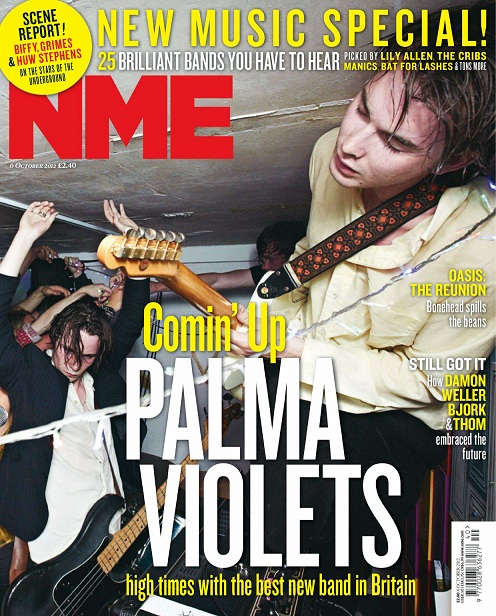
When you first look at this front cover of Mixmag magazine, you notice the main cover line ‘Steve Aoki’ as it is centred and bold. The text is in two colours (white and red) with a black background surrounding it. These contrasting colours cause the cover line to stand out above everything else and look striking. The other cover lines also follow this colour scheme and style of presentation (colour fill around text), as well as all the letters being capitalised, adding emphasis. However, the cover lines tend to differ in font types, which I suppose adds a bit more variety to the magazine, but it’s still kept looking fresh and modern as the fonts used all have a similar crisp, trendy style. This design is further emphasised by the tidy presentation of the cover lines - they look ordered and organised. Language throughout the cover lines such as ‘forever’, ‘massive’, ‘dying’, ‘special’ and ‘flying’ are all dramatic and over the top, but engage the reader and encourage them to pick up the magazine. The masthead takes up most space at the top of the magazine and is slightly covered by the main image, but it is still very much recognisable due to it’s unique and easy to identify design. In general, the colour scheme on this front cover is mainly made up of red and black, with white being the most dominant colour. The white is what helps with giving Mixmag magazine it’s chic, up to date appearance, as it is a colour that can have connotations of cleanliness and purity, and these three colours as a whole make the cover look vibrant and energetic. The selling line for this magazine is positioned above the masthead and reads ‘The world’s biggest dance music and clubbing magazine’, which automatically informs you of the genre of magazine and is also a powerful statement that captures the reader if they realise it may be of interest to them. The dateline, price, website and bar code are all positioned together in the bottom right corner of the cover, making them easily accessible to the reader and allowing them to be fully informed with no difficulty. The overall layout of this front cover is neat, spaced and uncluttered, I think this helps the magazine to appeal to an older, slightly more mature audience, as it makes the appearance of the magazine sophisticated and trendy.
The main image on this cover captures Steve Aoki, an electro house musician and record producer. The photo looks as if he has been captured mid-jump as his hair is flying about and his knees are slightly bent. This, along with his facial expression, makes the image look animated and dynamic. His hand gestures seem to put him in an angelic type pose, he looks respected and powerful. The shot includes his whole body and ensures he takes up the full length of the magazine and is the centre of attention. In terms of clothing, Aoki is shown wearing slightly unusual attire, including a belted jacket with locks on, and non-matching shoes. However you can see a theme occur in the colours of his outfit, as the jacket is covered with the american flag, and the shoes match also - I know Steve Aoki is from America and so this suggests he could be promoting his country and its music. Overall his style comes across as slightly quirky and unusual, but at the same time, hip, cool and trendy - this is going to attract people of a similar style to the magazine. The background to the main image is plain, this ensures the reader is not distracted by any further images and also keeps the magazine looking uncluttered.
From looking at this front cover I would say the overall style of this magazine is fresh, trendy and sophisticated. The target audience seems to be 16-24 year olds, suggested by the genre of music (dance/clubbing), clean, stylish layout, and professional design. The magazine seems pretty multi-gender friendly and more focused at appealing to an audience with a particular interest in dance/clubbing music.












